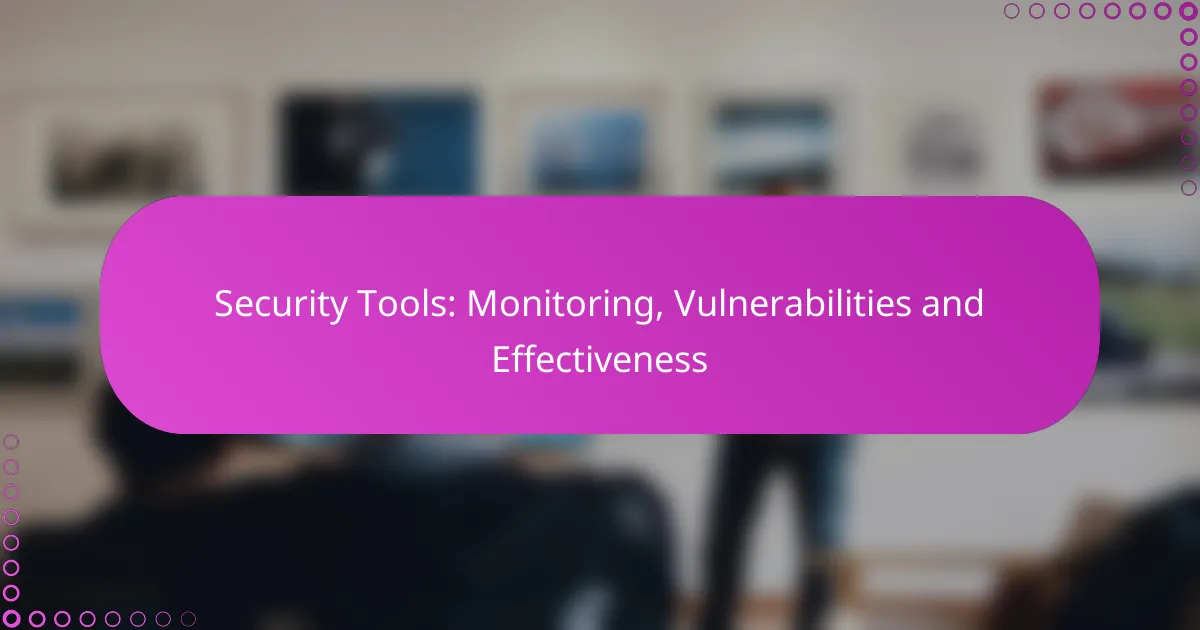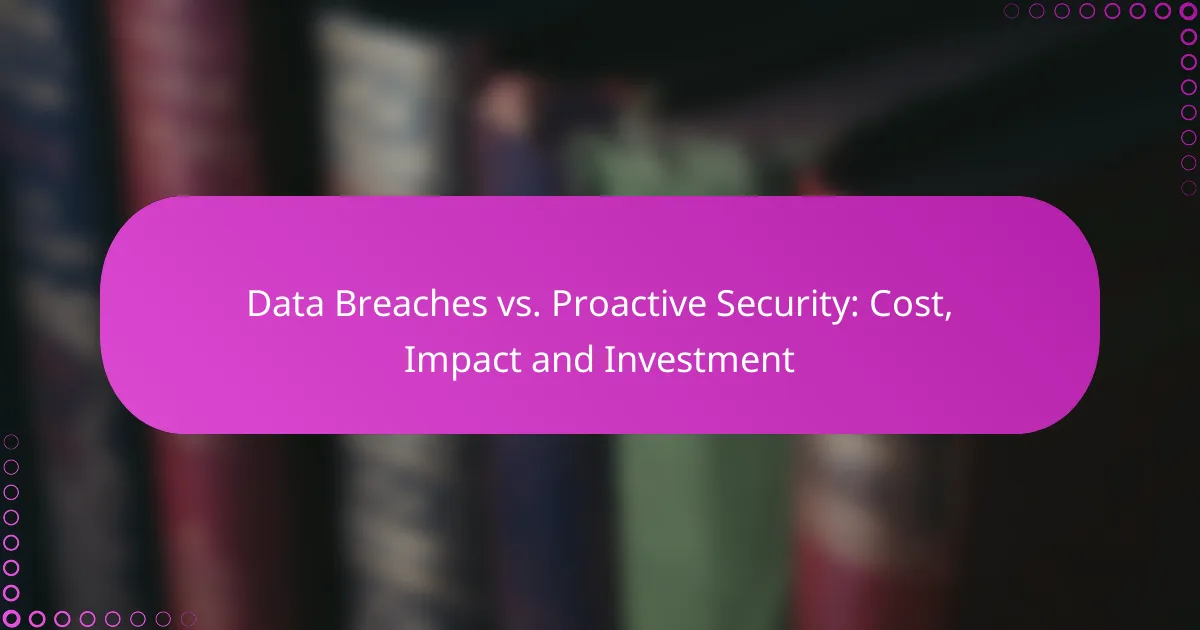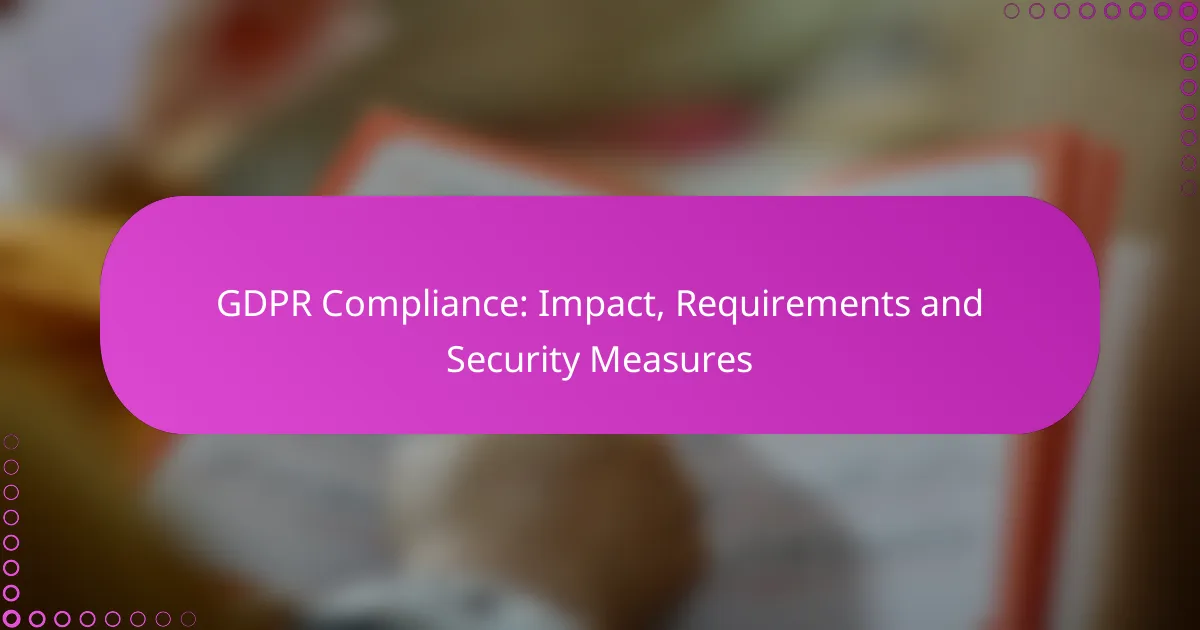In today’s digital landscape, effective security tools are essential for monitoring network activity and identifying vulnerabilities. These tools not only provide real-time insights and alerting capabilities but also utilize various assessment methods to uncover weaknesses within systems. The overall effectiveness of these tools hinges on their integration with existing systems, user training, and regular updates, enabling organizations to enhance their security posture and mitigate risks.

What are the best security monitoring tools?
The best security monitoring tools provide real-time insights into network activity, helping organizations detect and respond to threats effectively. Key tools include those that offer comprehensive data analysis, alerting capabilities, and integration with existing security systems.
Splunk
Splunk is a powerful platform for searching, monitoring, and analyzing machine-generated data. It excels in providing detailed insights through its user-friendly interface and robust data visualization tools.
Organizations often use Splunk for log management, security information and event management (SIEM), and operational intelligence. Its scalability makes it suitable for small businesses to large enterprises, though costs can increase significantly with data volume.
Datadog
Datadog is a cloud-based monitoring solution that integrates seamlessly with various applications and services. It offers real-time observability across cloud applications, infrastructure, and logs.
With its focus on performance monitoring, Datadog helps teams identify issues before they affect users. Its pricing model is based on usage, making it flexible for different organizational sizes, but can become costly as more features are added.
LogRhythm
LogRhythm is a comprehensive security intelligence platform that combines SIEM, log management, and network monitoring. It is designed to help organizations detect, respond to, and mitigate security threats efficiently.
LogRhythm’s analytics capabilities allow for rapid investigation and threat detection, making it a strong choice for compliance-driven environments. However, its complexity may require dedicated resources for optimal use.
IBM QRadar
IBM QRadar is a leading SIEM solution that provides deep visibility into network activity and security threats. It uses advanced analytics to correlate data from various sources, enabling quick identification of potential risks.
QRadar is particularly effective for large organizations needing to comply with regulations such as GDPR or HIPAA. Its pricing can be on the higher side, but the comprehensive features justify the investment for many enterprises.
AlienVault
AlienVault offers a unified security management platform that combines SIEM, asset discovery, and vulnerability assessment. It is designed for organizations looking for an all-in-one solution to manage their security posture.
With its user-friendly interface and built-in threat intelligence, AlienVault is suitable for small to medium-sized businesses. However, larger organizations may find it less scalable compared to other options, so careful evaluation is necessary.
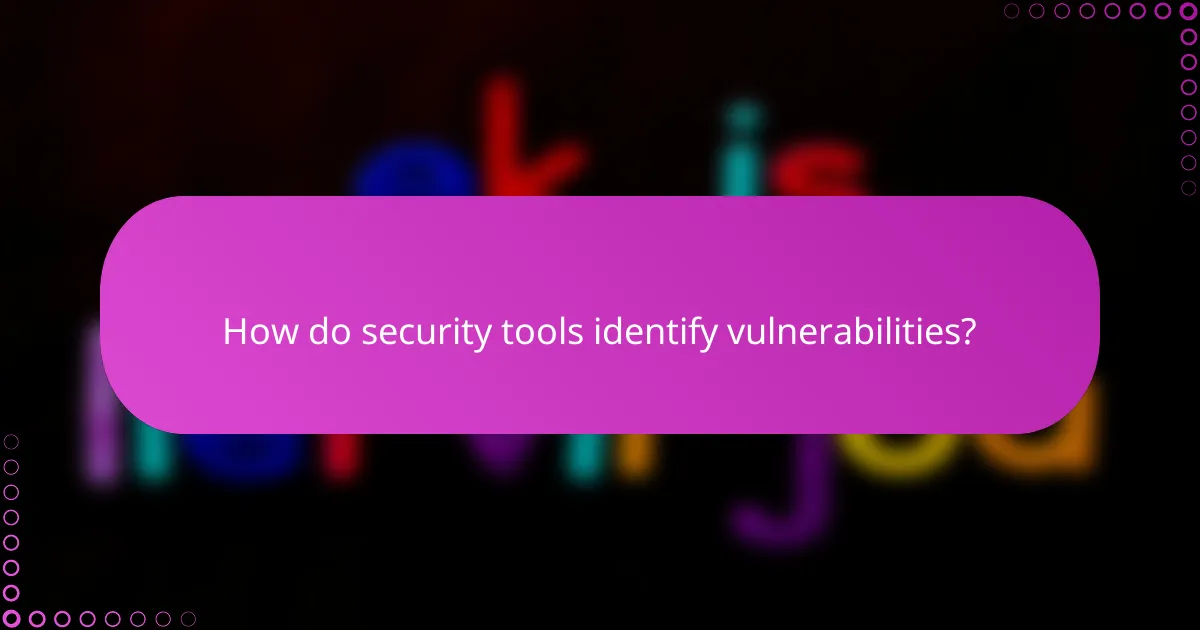
How do security tools identify vulnerabilities?
Security tools identify vulnerabilities through various methods that assess systems for weaknesses. These methods include automated scanning, penetration testing, and integrating threat intelligence, each providing unique insights into potential security gaps.
Automated scanning
Automated scanning involves using software tools to systematically check systems for known vulnerabilities. These tools can quickly analyze large networks and applications, identifying issues such as outdated software, misconfigurations, and missing patches.
Common tools for automated scanning include Nessus, Qualys, and OpenVAS. It’s crucial to regularly schedule scans, as new vulnerabilities emerge frequently, and ensure that the scanning tools are updated with the latest vulnerability databases.
Penetration testing
Penetration testing simulates real-world attacks to evaluate the security of a system. This method involves ethical hackers who attempt to exploit vulnerabilities, providing a practical assessment of how well a system can withstand an attack.
Penetration tests can be conducted on a regular basis or after significant changes to a system. Organizations should consider the scope of the test and ensure that it aligns with their security objectives, as well as comply with relevant regulations, such as GDPR or PCI DSS.
Threat intelligence integration
Integrating threat intelligence involves using external data about emerging threats to enhance vulnerability identification. This can include information on new malware, attack vectors, and vulnerabilities that are being actively exploited in the wild.
Organizations can leverage threat intelligence feeds from reputable sources to stay informed about potential risks. By correlating this data with internal scanning and testing results, security teams can prioritize vulnerabilities based on their relevance and potential impact on the organization.

What factors affect the effectiveness of security tools?
The effectiveness of security tools is influenced by several key factors, including how well they integrate with existing systems, the level of user training and awareness, and the frequency of updates and maintenance. Understanding these elements can help organizations maximize their security investments and reduce vulnerabilities.
Integration with existing systems
Effective security tools must seamlessly integrate with an organization’s current infrastructure. Poor integration can lead to gaps in security coverage and increased complexity, making it harder to manage threats. For example, a firewall that doesn’t work well with an existing network monitoring system may leave vulnerabilities unaddressed.
To ensure smooth integration, consider tools that offer APIs or support for common protocols. Regularly assess how new tools fit within your existing ecosystem to maintain a cohesive security posture.
User training and awareness
User training and awareness are critical for the successful implementation of security tools. Employees should understand how to use these tools effectively and recognize potential threats. Regular training sessions can significantly reduce the risk of human error, which is often a major factor in security breaches.
Implementing a security awareness program that includes simulated phishing attacks and regular updates on security best practices can enhance user vigilance. Aim for ongoing education rather than one-time training to keep security top of mind.
Regular updates and maintenance
Regular updates and maintenance are essential for keeping security tools effective against evolving threats. Outdated software can become a target for attackers, as vulnerabilities are often discovered and exploited over time. Establish a routine schedule for updates to ensure that all security tools are equipped with the latest protections.
Consider using automated update systems where possible to streamline the process. Additionally, regularly review and test your security tools to ensure they are functioning as intended and adapt to new threats as they arise.
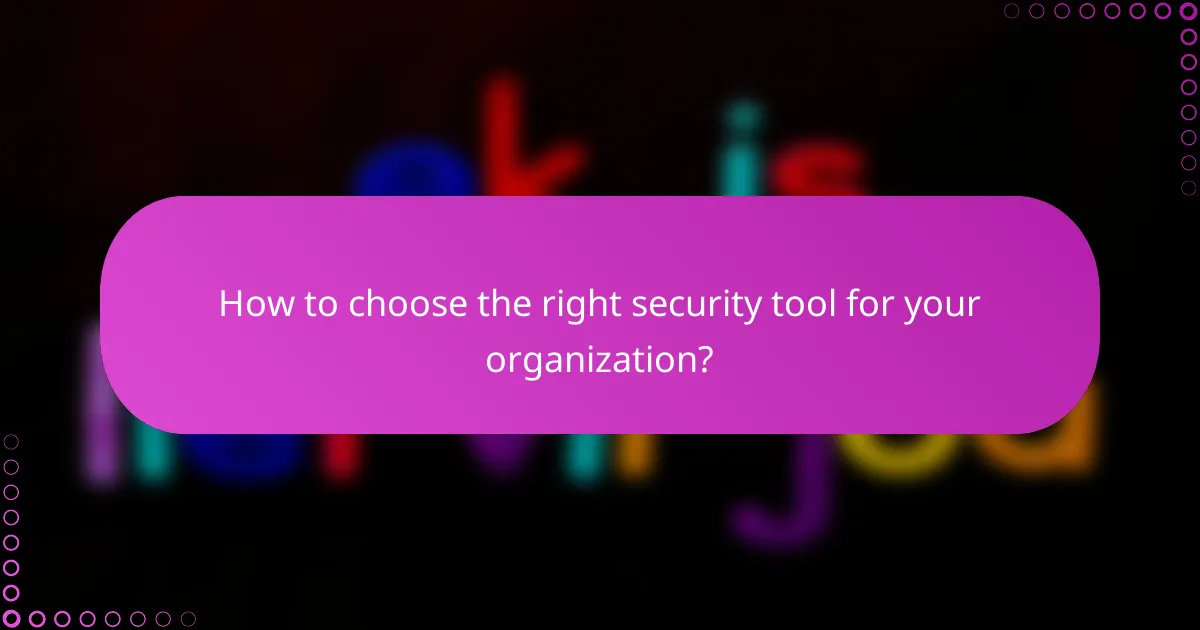
How to choose the right security tool for your organization?
Choosing the right security tool involves understanding your organization’s specific needs, evaluating vendor credibility, and ensuring the solution can grow with your business. A well-selected tool enhances your security posture while aligning with operational requirements and budget constraints.
Assess organizational needs
Start by identifying the specific security challenges your organization faces. Consider factors such as the size of your organization, the type of data you handle, and existing compliance requirements. For example, a small business may prioritize basic malware protection, while a large enterprise might need advanced threat detection and incident response capabilities.
Engage stakeholders from various departments to gather insights on their security concerns. This collaborative approach helps ensure that the selected tool addresses the diverse needs across your organization.
Evaluate vendor reputation
Research potential vendors to gauge their reliability and effectiveness. Look for reviews, case studies, and testimonials from organizations similar to yours. A vendor with a strong track record in your industry is more likely to understand your unique security challenges.
Check for certifications and compliance with industry standards, such as ISO 27001 or GDPR, which can indicate a commitment to high security practices. Additionally, consider their customer support and responsiveness, as these factors can significantly impact your experience with the tool.
Consider scalability
Choose a security tool that can scale with your organization’s growth. As your business expands, your security needs will evolve, requiring more robust features or additional licenses. A scalable solution can help avoid the need for frequent replacements or upgrades, saving time and resources.
Evaluate whether the tool can accommodate increased data volumes or additional users without a significant drop in performance. Look for options that offer flexible pricing models, allowing you to adjust your investment as your needs change.

What are the common vulnerabilities in security tools?
Common vulnerabilities in security tools include misconfigurations, outdated software, and insufficient access controls. These weaknesses can lead to significant security breaches if not properly managed.
Misconfigurations
Misconfigurations occur when security tools are not set up correctly, leading to potential exposure of sensitive data or systems. This can happen due to default settings being left unchanged or improper implementation of security policies.
To mitigate misconfigurations, regularly review and update configuration settings according to best practices. Utilize automated tools that can help identify and rectify configuration issues before they become a risk.
Outdated software
Outdated software is a critical vulnerability as it may lack the latest security patches and updates, making it an easy target for attackers. Security tools must be kept current to defend against newly discovered threats.
Establish a routine for updating software, ideally on a monthly basis. Monitor vendor announcements for critical updates and consider using automated patch management solutions to streamline the process.
Insufficient access controls
Insufficient access controls can allow unauthorized users to gain access to sensitive information or systems, increasing the risk of data breaches. Properly implemented access controls ensure that only authorized personnel can access specific resources.
Implement role-based access control (RBAC) to limit user permissions based on their job functions. Regularly audit access logs and permissions to ensure compliance with security policies and adjust as necessary to minimize risks.
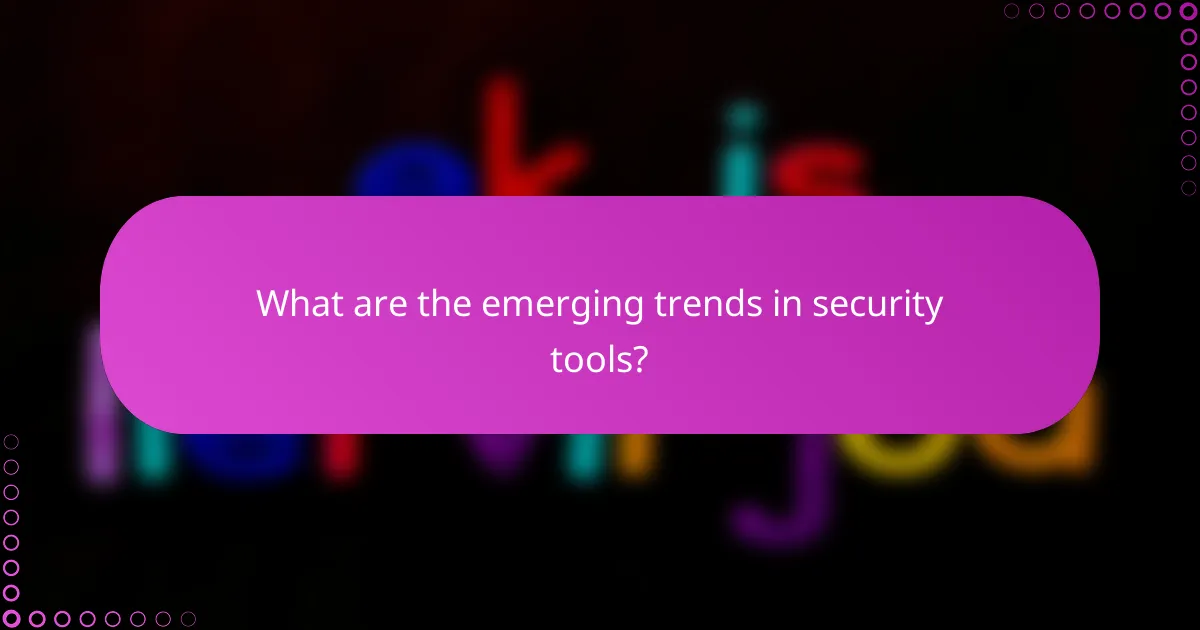
What are the emerging trends in security tools?
Emerging trends in security tools focus on enhanced monitoring capabilities, vulnerability management, and overall effectiveness. These tools are increasingly leveraging artificial intelligence and machine learning to improve threat detection and response times.
Enhanced Monitoring Capabilities
Enhanced monitoring capabilities are crucial for identifying security threats in real-time. Tools are now integrating advanced analytics and automation to provide continuous surveillance of networks and systems.
For example, Security Information and Event Management (SIEM) systems are evolving to incorporate machine learning algorithms that can detect anomalies faster than traditional methods. This allows organizations to respond to potential threats before they escalate.
Vulnerability Management
Vulnerability management is becoming more proactive, with tools focusing on identifying and mitigating risks before they can be exploited. Regular scanning and assessment of systems are essential to maintain security posture.
Organizations should implement a routine vulnerability assessment schedule, ideally monthly or quarterly, depending on their risk profile. Utilizing automated tools can streamline this process and ensure timely updates and patches.
Effectiveness of Security Tools
The effectiveness of security tools is measured by their ability to prevent breaches and minimize damage. Organizations need to evaluate tools based on their performance metrics and incident response times.
It’s advisable to conduct regular effectiveness reviews and simulations to test security tools under various scenarios. This helps in understanding their strengths and weaknesses, allowing for informed decisions on upgrades or replacements.






